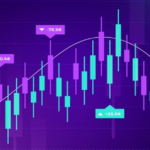To navigate the intricate world of financial markets, traders rely on astute analysis and informed decision-making. There exist several analysis techniques that traders employ to glean insights, identify opportunities, and make wise trading choices. In this article, we’ll delve into the diverse methods of analysis employed in financial trading, with a special emphasis on the versatile MetaTrader-4 platform.
1. Fundamental Analysis: Unveiling Underlying Forces
Fundamental analysis is a key approach to unraveling the factors that influence the value of financial instruments. This method involves scrutinizing economic indicators, company financials, geopolitical events, and news releases. Traders who use fundamental analysis aim to ascertain the actual value of an asset and whether it’s currently under- or overvalued. To empower traders with crucial fundamentals, MetaTrader 4 provides real-time economic calendars and news feeds, ensuring they remain well-informed.
2. Technical Analysis: Decoding Price Patterns
Forecasting future price movements involves delving into historical price and volume data using technical analysis. Traders employing this method analyze charts, indicators, and patterns to discern trends, support and resistance levels, and optimal entry and exit points. MetaTrader-4 serves as a treasure trove of technical tools as it offers customizable templates, built-in indicators, and top-notch charting capabilities.
3. Sentiment Analysis: Gauging Market Mood
Sentiment analysis delves into market sentiment to gauge bullish or bearish inclinations among traders. Practitioners of this method monitor social media, news sentiment, or employ specialized sentiment indicators to uncover insights. While MT4 doesn’t inherently feature sentiment analysis tools, traders can incorporate third-party utilities or manually assess market sentiment.
4. Quantitative Analysis: Calculated Decision-Making
Quantitative analysis, on the other hand, employs mathematical and statistical models to refine trading strategies. This approach entails number crunching and algorithm application to dissect financial data, facilitating well-informed trading choices. Additionally, in MetaTrader-4, traders have the capability to backtest as well as automate strategies using the potent MetaQuotes Language 4 (MQL4).
5. Intermarket Analysis: Connections Across Markets
Intermarket analysis scrutinizes relationships between different financial markets. Traders applying this method discern correlations, trends, and divergences among various markets, shaping their trading decisions. While MetaTrader 4 doesn’t directly proffer Intermarket analysis tools, it allows traders to concurrently monitor multiple markets and draw cross-market insights.
In Conclusion: A Holistic Approach
Flourishing in trading necessitates a comprehensive approach that synergizes various analysis methods. Fundamental analysis reveals underlying drivers, while technical analysis unveils price trends. Sentiment analysis deciphers market mood, and quantitative analysis harnesses mathematical models for strategy formation. Lastly, intermarket analysis delves into interconnectedness between markets.
The Role of MetaTrader 4: An Empowering Platform
The influential MetaTrader-4 platform, firstly, furnishes traders with a rich spectrum of features and tools to conduct diverse types of analysis. By harnessing the prowess of MetaTrader 4 and, moreover, skillfully amalgamating distinct analysis techniques, traders can elevate their decision-making process and potentially enhance their trading outcomes. Additionally, this versatile platform acts as a hub where different forms of analysis converge. Thus, it equips traders with the resources to navigate the complex landscape of financial trading with confidence and precision.












0 Comments